Table of Contents
Introduction
The separate domains of Architecture and the Cinematic world intertwine in numerous ways, forging connections that extend beyond physical structures and delve into metaphorical realms. Cinema is an art form, with its tapestry of images, sound, and storytelling. Architecture exhibits the tangible as it expresses identity through physical construction with an everlasting presence. Filmmakers have utilised the power of architecture as a crucial element in their narratives, using built environments to establish atmosphere, enhance plotlines, and immerse viewers in captivating visual worlds.
To comprehend the interplay of architecture and the film industry, it is essential to explore the constituent elements that define these two art forms and explore how their interconnectedness mutually enriches their respective worlds.
Unveiling Architecture’s Essence

The discipline of Architecture contains a set of fundamental elements and principles that guide design, composition, and creation of visually aesthetic and harmonious built environments. The book “Form, Space, and Order” by Francis D.K. Ching outlines these principles of design, presenting essential concepts used in architectural practice. Elements such as space, form, line, light, and texture provide the foundation for architectural expression.
Space defines the boundaries and volumes, while form refers to the three-dimensional shape and structure. Lines create visual hierarchy and guide movement, while light shapes the atmosphere and highlights features. Texture adds depth and tactile qualities. Principles like rhythm, balance, proportion, emphasis, unity, and contrast ensure harmony, coherence, and visual interest. Architects skillfully employ these elements and principles to create functional, aesthetically pleasing, and meaningful spaces that enrich the human experience
Cinematic Composition Revealed
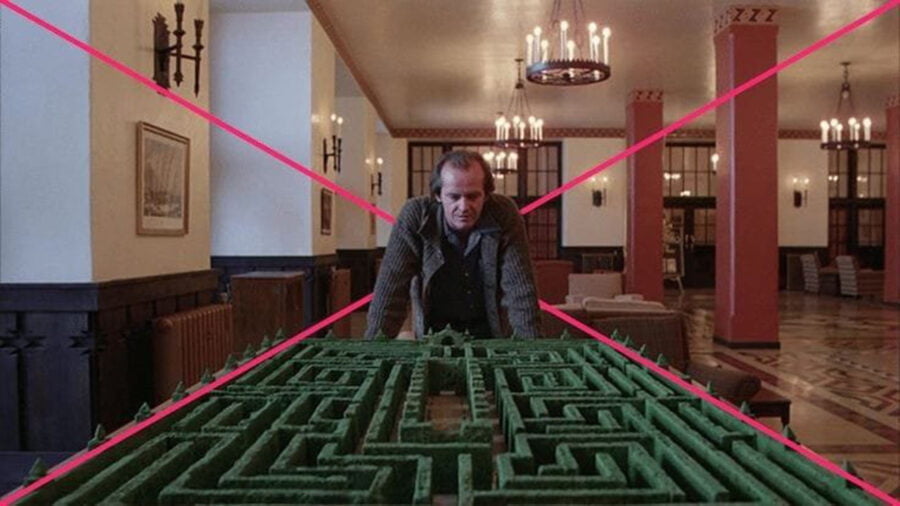
Cinematic composition principles and elements merge to generate compelling visual storytelling. Principles include framing, rule of thirds, balance, movement, and rhythm. Elements encompass line, shape, colour, light, and texture. Framing guides the viewer’s focus, while the rule of thirds creates balance. Movement and rhythm add dynamism. Lines and shapes define visual structure. Colours evoke mood and emotion. Lighting sets the tone. Texture enhances realism. These components combine to craft captivating cinematic compositions that engage audiences in the narrative world.
Architecture as Cinematic Settings
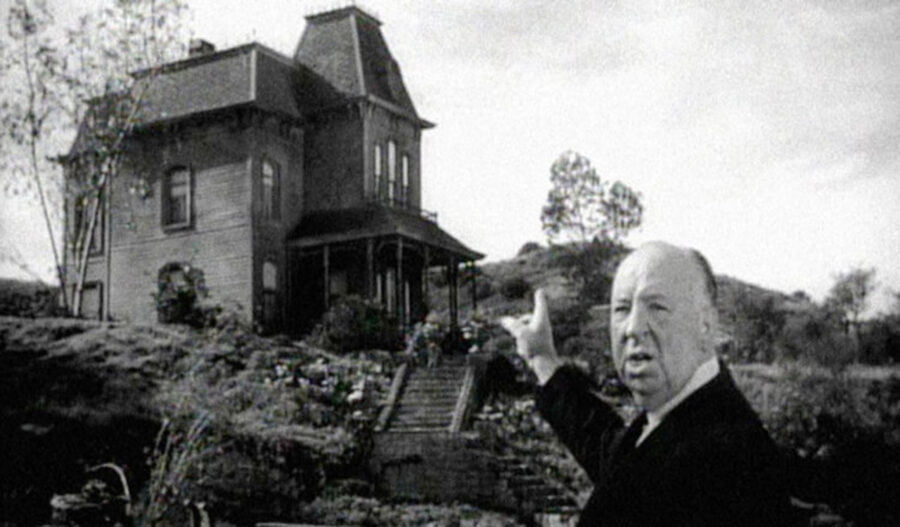
Architecture in cinema goes beyond being a backdrop; it becomes a character itself, influencing the narrative. For example, in “Psycho,” the Bates Motel reflects Norman Bates’ disturbed psychology. Architectural symbolism and metaphor are powerful tools used to convey ideas visually. In “Shutter Island,” the disorienting and eerie interiors represent the complexity of the human mind. Settings in films mirror characters’ psychology and relationships. In “The Notebook,” the plantation house showcases faded love while the restored mansion represents youthful romance.
Architecture as a narrative device adds depth and vibrancy to films. It creates extraordinary worlds that surround the audience in wonder and enhances the storytelling. Through careful selection of settings and the use of symbolism, architecture becomes a vital element in conveying emotions and messages on screen.
Set Designer and Architects: Collaborative Creativity
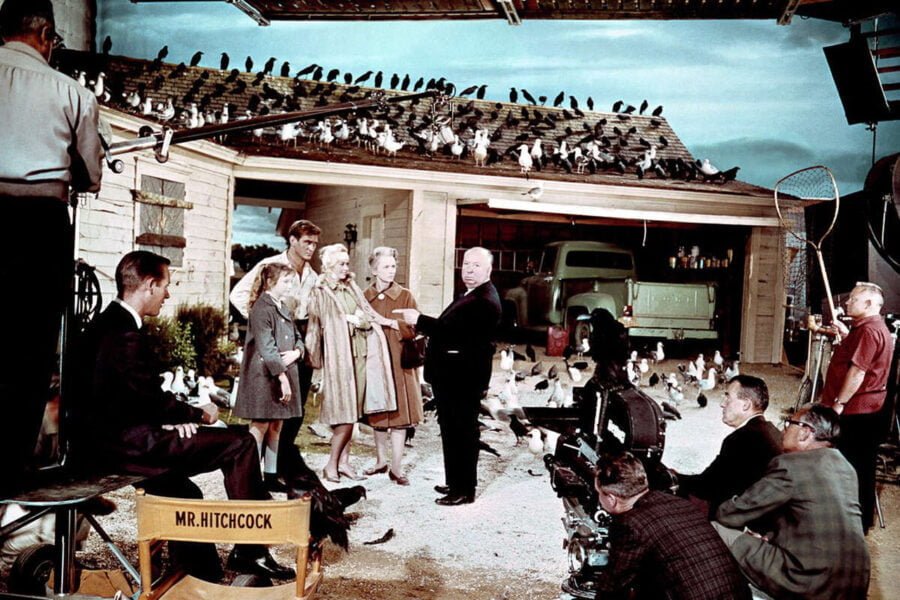
Set designers in cinema and architecture share a common passion for creating visually captivating environments. While architects primarily focus on designing functional and permanent structures, set designers to specialise in constructing temporary and adaptable sets for film and theater productions. Such as Alfred Hitchcock’s “The Birds” with its elaborate set design. Both disciplines require a keen eye for spatial composition, attention to detail, and an understanding of how space can shape the story and evoke emotions.
Set designers often draw inspiration from architectural principles and collaborate with architects to bring their vision to life on the screen. In some cases, architects transition into set design roles, leveraging their skills in crafting realistically stunning sets. Their work involves considering the practical aspects of construction, the aesthetics of the set, and the requirements of the script and the director’s vision. Whether in cinema or architecture, these professionals play a vital role in transforming spaces into immersive and compelling worlds.
Architectural Aesthetics in Cinema
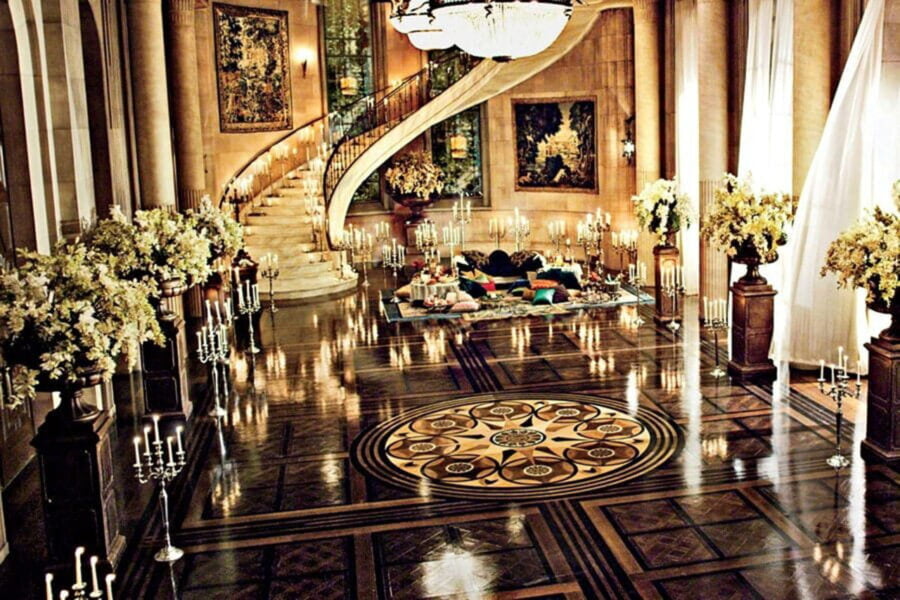
Architecture in cinema serves as a visual feast for the audience, showcasing the aesthetics of different architectural styles and periods. Filmmakers meticulously recreate historical or contemporary architectural designs to transport viewers into specific time periods. From the Art Deco elegance of “The Great Gatsby” to the futuristic cityscapes of “Star Wars,” architectural styles contribute to the overall visual allure of a film. Furthermore, iconic landmarks like the Eiffel Tower in “Midnight in Paris” add authenticity and display cultural contexts.
Architectural composition and framework techniques are employed to enhance visual storytelling. The use of symmetry, leading lines, and framing elements within the cinematic setting can produce a sense of harmony, balance, or even tension. Through grand panoramic shots or intimate close-ups, filmmakers use architectural composition to guide the viewer’s eye and elicit certain emotions.
Architecture and Spatial Design in Film
Architecture and spatial design are crucial in enhancing storytelling in cinema. Filmmakers strategically utilise architectural spaces to create specific moods, convey character traits, and advance the plot. The choice of locations and the arrangement of spaces can invoke a response and immerse viewers in the narrative.
Additionally, architectural manipulation is often employed for dramatic effect, whether it’s through the distortion of proportions, unconventional layouts, or the creation of fantastical environments. These techniques heighten tension, amplify emotions, and add visual impact to the storytelling. Moreover, spatial transitions and continuity are carefully orchestrated to maintain a coherent narrative flow. Smooth transitions between spaces, clever use of doorways, and seamless movement within architectural settings contribute to the seamless progression of the story and keep the audience engaged.
Architectural Elements and Atmosphere on Screen
Architectural elements, like lighting, shape the cinematic atmosphere by creating ambiance. Whether it’s the warm glow of a cozy living room or the stark lighting in a dimly lit alley, lighting accentuates the architectural details and enhances the emotional impact of a scene. Similarly, the choice of textures and materials within architecture can manufacture specific atmospheres, such as the gleaming facades of a futuristic city. These elements contribute to the visual richness of a film.
Furthermore, the role of sound design and architectural acoustics play a notable role in immersing the audience. The reverberation of the sound within built spaces such as echoes in a cathedral, or the muffled sounds in a room all contribute to the sensory experience. This enhances the realism and emotional impact of a film. These elements create a multi-sensory experience that adds depth and resonance to the cinematic storytelling.
Architecture across Film Genres
Architecture plays a distinct role in shaping the visual aesthetics and narrative atmosphere of different film genres. In historical dramas and period pieces, meticulous attention is given to recreating architectural styles and settings that transport viewers to specific eras. Whether it’s the grandeur of ancient palaces or the opulence of Victorian mansions, the architecture serves as a visual representation of the time period and enhances the authenticity of the story. Let’s delve into iconic films to explore the role of architecture across different genres.
Architecture in Horror and Thrillers
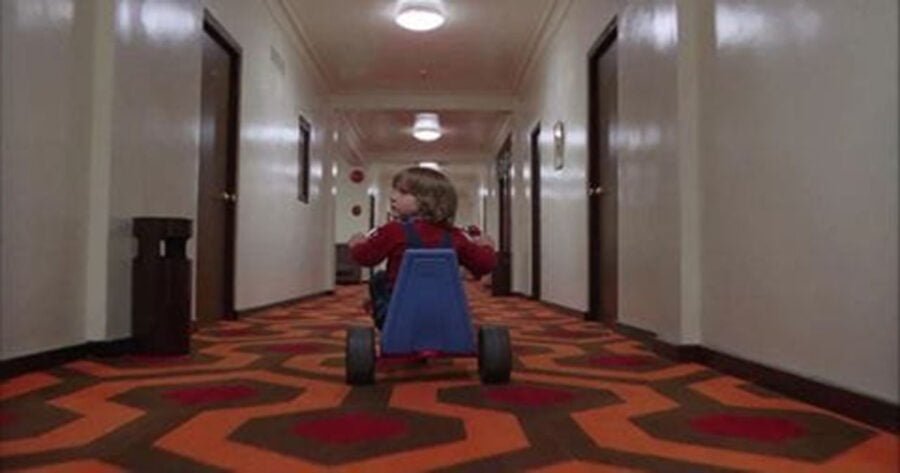
In the realm of horror and psychological thrillers, architecture becomes a tool for conjuring a sense of dread and fear. Haunted houses, eerie mansions, and abandoned structures set the stage for terrifying encounters and psychological torment.”The Shining,” directed by Stanley Kubrick, masterfully uses architecture in its set design and location to create an unsettling experience.
The distinctive architecture of the Overlook Hotel becomes a character itself, with its grand interiors and labyrinthine layout amplifying the psychological tension. The hotel’s long hallways, symmetric patterns, and maze-like design reflect the characters’ descent into madness, while the vast, empty spaces and recurring motifs add to the sense of dread. By employing architecture as a visual device, “The Shining” creates an eerie atmosphere that heightens the emotional impact.
Architecture in Fantasy Cinemas
In fantasy films, architecture becomes a canvas for imaginative and otherworldly creations. Mystical realms are brought to life through innovative architectural designs. These imaginative structures and environments not only contribute to the visual spectacle but also help establish the unique world-building and fantastical elements of the genre.” Pans Labyrinth,” directed by Guillermo del Toro, masterfully utilises architecture in its set design and locations to depict two contrasting realms.
The real world is portrayed through decaying structures like the old mill and maze-like mansion, reflecting the harshness of war. In contrast, the mythical labyrinth presents intricate and enchanting architectural landscapes, symbolizing the complexity of the story and adding to its mystical atmosphere. The architectural elements become integral to the narrative, highlighting themes of escapism and blurring the line between reality and fantasy. Overall, “Pan’s Labyrinth” exhibits visually stunning architecture that creates a thematically rich cinematic experience.
Architecture in Science Fiction
In science fiction, architecture represents futuristic cityscapes, or alien civilizations, that are brought to life through innovative architectural designs. Architecture in “The Hunger Games” films illustrates social inequality and oppressive regimes. The grandiose structures of the Capitol highlight the decadence of the ruling elite, while the utilitarian and discoloured architecture in the districts reflects the harsh living conditions of the oppressed.
Additionally, the architectural landscapes of the Hunger Games arena create visually captivating and treacherous settings that contribute to the intensity of the narrative. Overall, the built environment in the Hunger Games films plays a crucial role in shaping the world and enhancing the storytelling, conveying themes of power, hierarchy, and survival.
Architecture in Romantic Comedies and Dramas
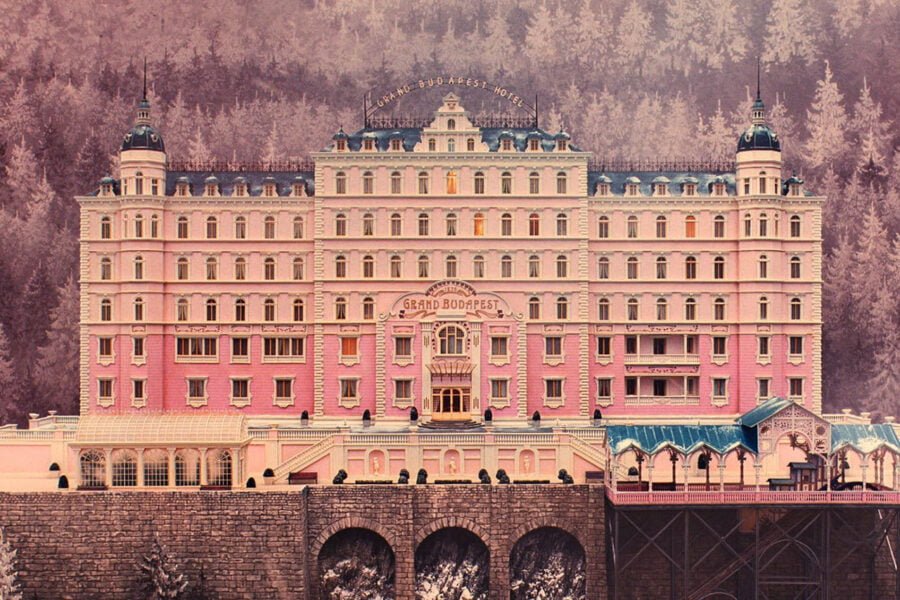
Romantic comedies and dramas use architecture to summon emotions and enhance the romantic ambiance. Charming city streets, picturesque landscapes, and iconic landmarks serve as scenery for heartfelt moments and passionate encounters.”The Grand Budapest Hotel,” directed by Wes Anderson, introduces viewers to a whimsical world through meticulous attention to architectural details. The hotel itself, with its ornate façade and colourful interiors, becomes a character in the film. Anderson’s symmetrical framing and precise camera movements showcase the grandeur of the hotel’s spaces.
The Art Deco, adds layers of visual appeal and historical context. Through its meticulous set designs and artifice, the film creates a unique visual aesthetic. “The Grand Budapest Hotel” demonstrates the power of architecture in a film by seamlessly integrating it into the narrative. Furthermore, the hotel’s grandeur juxtaposed with its slightly dilapidated state represents fading glory of a bygone era, mirroring the bittersweet nature of romantic films. The architecture becomes a visual reflection of longing for love and connection.
Architecture in Psychological Thrillers
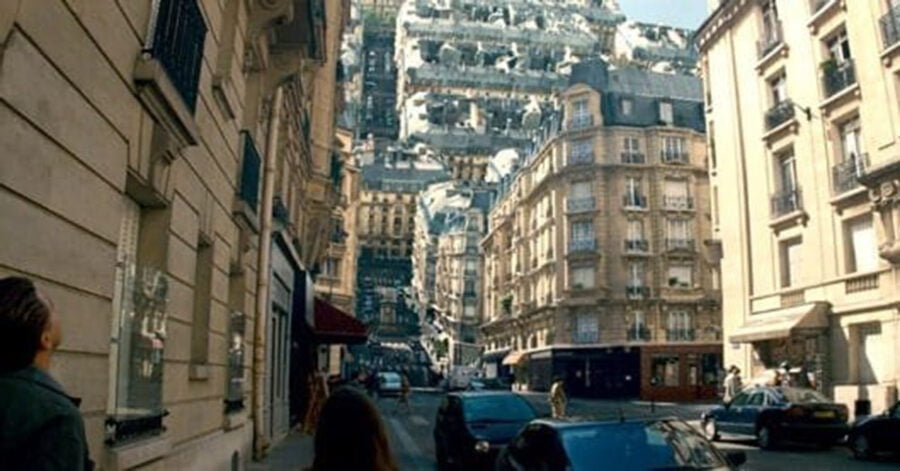
In psychological thrillers, architecture takes reflects the mind, serving as a silent accomplice in the twisted games of the mind, blurring the boundaries of reality and illusion. In the film “Inception” by Christopher Nolan, architecture plays a pivotal role in the exploration of dreams and the manipulation of reality. The concept of shared dreaming is brought to life through meticulously designed dreamscapes that bend and fold with architectural precision.
The cityscapes are surreal and gravity-defying, with buildings that curve and intersect, creating a sense of disorientation and the potential for mind-bending experiences. Architecture becomes a tool for the characters to navigate and manipulate the dream world, where they can construct and deconstruct environments to their advantage. From labyrinthine mazes to towering structures that crumble, the architecture in “Inception” becomes a visual representation of the subconscious mind, inviting the audience on a captivating journey through the realms of dreams.
The Future of Architecture in Film

The future of architecture in cinema holds exciting possibilities driven by advancements in technology and CGI. With the increase in the use of sophisticated tools and techniques, filmmakers can seamlessly blend real-world landscapes with computer-generated components. This allows architects and cinematographers to explore new avenues of experimentation and imagination, creating alluring virtual worlds that defy the limits of physical reality.
These virtual environments allow for unprecedented architectural creativity, showcasing futuristic designs, fantastical structures, and unconventional spatial experiences. As architecture continues to evolve, its impact on shaping future cinematic experiences will be profound. The seamless integration of architecture into narratives will enhance the visual spectacle, emotional resonance, and immersive qualities of films, creating cinematic experiences that transport audiences into extraordinary architectural realms.
Cinema’s Influence on Architecture
Unlike the whimsical settings of cinema, architecture is confined by reality. Yet, cinema inspires architectural design to push boundaries and create revolutionary experiences for viewers. The journal article titled “The Existential Image: Lived Space in Cinema and Architecture” by Juhani Pallasmaa explores the interconnectedness of cinema and architecture through the lens of lived space and existential experience. Pallasmaa delves into the shared aspects of these two art forms, emphasizing the importance of human experience and perception in both disciplines.
The arrangement of spaces, play of light and shadow, and sequencing of architectural elements can parallel the dynamic storytelling of cinema. Consider the iconic Guggenheim Museum in Bilbao, Spain, designed by Frank Gehry. The museum’s sinuous forms, dramatic curves, and dynamic volumes generate movement and rhythm, reminiscent of fluid camera movements in a film. Visitors experience a series of carefully choreographed spatial sequences that mimic the progression of a cinematic narrative, generating a sense of anticipation, discovery, and awe.
Conclusion
Cinema becomes a concept without the backdrop and influence of architectural design. Architecture’s role in cinema goes beyond aesthetics, becoming an integral part of storytelling and visual communication. Filmmakers use architectural environments to transport audiences, elicit feelings, and convey narrative subtext. The use of architectural styles, symbolism, and landmarks in cinema showcases the profound influence of the built environment. Pallasmaa discusses the symbolic significance of architecture in cinema, with architectural elements conveying deeper meaning and contributing to the overall narrative.
The use of architectural landmarks as characters in films is also explored; highlighting how these structures can become iconic symbols within cinematic storytelling. As architects and filmmakers collaborate, architecture will continue to shape and enhance cinema. The intricate relationship between architecture and cinema enriches our viewing experiences, blurring boundaries and leaving a lasting cultural impact. Architecture in cinema transcends the realm of abstraction, teleporting viewers into tangible worlds of immersive storytelling and transformative experiences.




